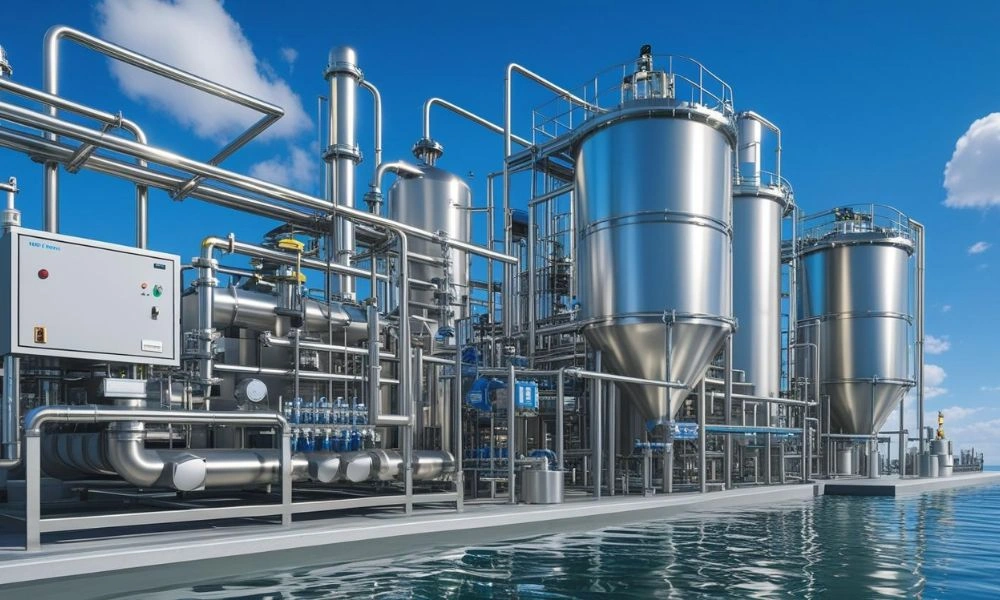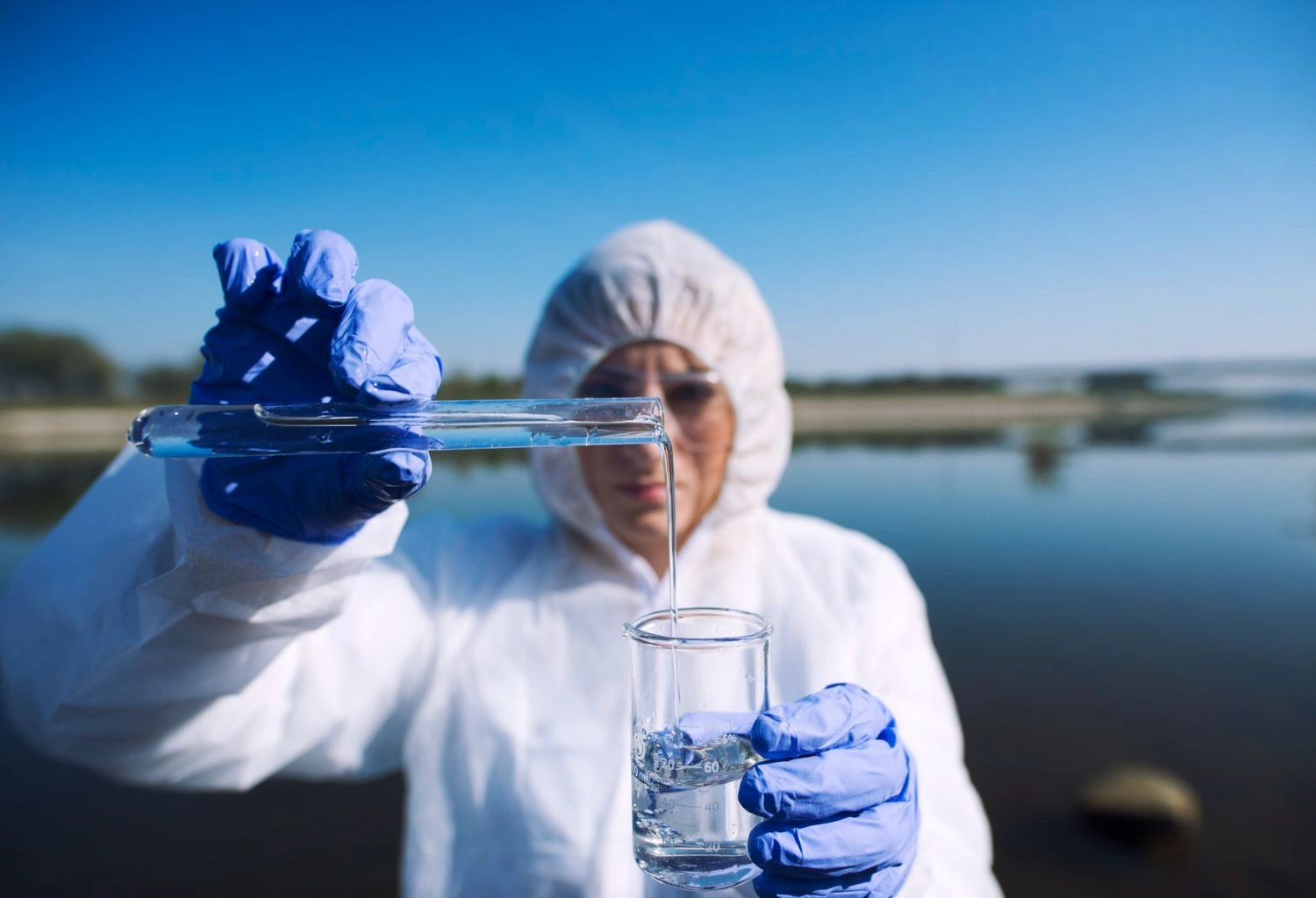Mine water treatment is essential for sustainable industrial practices. WCSP offers halogen-free, eco-friendly solutions using bioremediation, AOP, MBBR, and electrocoagulation technologies. These systems ensure safe water reuse, regulatory compliance, and environmental protection. With cost-effective, low-maintenance designs, WCSP’s solutions help industries in Pakistan reduce pollution, protect water sources, and adopt cleaner wastewater management strategies for the long term.
Green & Blues
Why Mine Water Treatment Is A Must Today
Mining activities produce large volumes of polluted water, which is usually laden with heavy metals, sulfates, and other harmful chemicals. When left untreated, this water can destroy ecosystems, pollute sources of drinking water, and present serious health hazards. In Pakistan and the rest of the world, there is increasing pressure to ensure environmental compliance and embrace sustainable practices. That is where mine water treatment comes in—a must, not a requirement.
With the growing need for sustainable industrial processes, green and halogen-free treatment of mine water is not only groundbreaking—it’s essential. Firms such as Water Care Services Pakistan (WCSP) are taking the lead by proposing technologies such as bioremediation, electrocoagulation, AOP, and MBBR, which have been specifically designed to treat mining wastewater with less harm to the environment.
What Are the Environmental Risks of Untreated Mine Water?
Mine water has toxic components like arsenic, lead, cadmium, mercury, and sulfates. Discharging them into natural water bodies without treatment, such pollution will:
- Kill aquatic life
- Contaminate soil and groundwater
- Impacts agriculture yield
- Promote disease epidemics in surrounding communities
Effective treatment of mine water is therefore necessary for adherence to regulations and protection of the environment.
How Does Halogen-Free Mine Water Treatment Work?
Conventional water treatment processes are mostly based on halogen-containing chemicals such as chlorine. Though efficient, they generate toxic DBPs. Halogen-free processes do not.
Halogen-free mine water treatment processes are:
Advanced Oxidation Processes (AOP): Destroys organic contaminants through ozone, UV radiation, or hydrogen peroxide.
Electrocoagulation: Destabilizes and separates pollutants using electricity without chemical addition.
Bioremediation: Employes indigenous microbes to break down dangerous chemicals in wastewater.
MBBR (Moving Bed Biofilm Reactor): Enhances treatment efficiency through carrier media that facilitates microbial growth.
All these technologies provide chemical-free, low-sludge, and low-energy options to traditional systems.
What Sets WCSP’s Mine Water Treatment Apart?
Water Care Services Pakistan is one of the first in mine water treatment that integrates:
- Sludge-free bioremediation
- Electrocoagulation systems specific to Pakistani conditions
- MBBR installations with low maintenance operation
- AOP integration for enhanced contaminant breakdown
Their solutions are:




Which Industries Can Eco-Friendly Mine Water Treatment Help?
Mine water treatment is not limited to the mining industry. Other industries that can use it are:
- Cement production
- Coal-fired thermal power plants
- Stone crushing plants
- Textile and dyeing industries around mining areas
All these industries suffer from water pollution and discharge issues. WCSP offers plug-and-play solutions adaptable to each.
How Green and Cost-Effective Is WCSP’s Solution Compared to Conventional Systems?





All of these make mine water treatment by WCSP not only green but cost-effective.
What Is the Role of AOP in Mine Water Treatment?
AOP is an effective treatment, particularly for:
- Degradation of organic compounds
- Chemical oxygen demand (COD) reduction
- Pathogen and bacterial destruction
WCSP employs AOP as a polishing stage to get treated water to discharge standards or better.
Can Treated Mine Water Be Reused?
Yes! With WCSP’s state-of-the-art systems, treated mine water can be reused for:
- Dust suppression
- Equipment washing
- Cooling towers
- Groundwater recharge
This lowers water usage and enables sustainable industrial water management.
Water Quality Monitoring
How is WCSP Enabling Environmental Regulations in Pakistan?
Pakistan’s environmental agencies are strengthening regulations regarding the discharge of industrial wastewater. WCSP assists industries in:
- Meeting EPA Pakistan standards
- Securing environmental clearance certificates
- Developing sustainable water reuse programs
- Enhancing corporate environmental responsibility (CER)
Conclusion:
Mine water treatment is no longer a choice. It’s a survival strategy for industry, legal obligation, and sustainability. WCSP’s environmentally friendly, halogen-free systems are a visionary solution to an expanding environmental issue.
From saving money to saving nature and human health, these systems redefine wastewater management for the mining sector. It’s time to leave traditional, chemically loaded treatments behind—and enter into a greener, more responsible era with Water Care Services Pakistan.
Frequently Asked Questions (FAQs)
1. What is mine water treatment?
Mine water treatment is the process of removing contaminants like heavy metals, sulfates, and organics from wastewater generated by mining operations.
2. Why is mine water treatment necessary in Pakistan?
Pakistan faces growing environmental regulations and water scarcity. Treating mine water protects ecosystems, complies with NEQS, and enables reuse in industry.
3. What are the dangers of untreated mine water?
Untreated mine water can contaminate soil and groundwater, harm aquatic life, reduce crop yield, and spread disease in nearby communities.
4. What does “halogen-free” treatment mean?
Halogen-free treatment avoids chemicals like chlorine that produce toxic by-products. Instead, it uses eco-friendly methods like bioremediation and electrocoagulation.
5. Which technologies are used in WCSP’s mine water solutions?
WCSP employs bioremediation, electrocoagulation, AOP, and MBBR technologies—all of which are efficient, low-maintenance, and environmentally friendly.
6. Can treated mine water be reused?
Yes. WCSP systems allow reuse for dust suppression, equipment cleaning, cooling towers, and even groundwater recharge—promoting sustainable water management.
7. Is mine water treatment expensive?
Not with WCSP. Their halogen-free systems are cost-effective due to low chemical usage, minimal sludge generation, and energy-efficient design.
8. What is the role of AOP in treatment?
AOP (Advanced Oxidation Process) is used to destroy organic pollutants and pathogens, helping meet discharge or reuse standards.
9. Which industries benefit from mine water treatment?
Besides mining, industries like cement, textiles, coal power, and stone crushing also benefit from eco-friendly water treatment solutions.
10. How does WCSP help with environmental compliance?
WCSP supports clients in meeting EPA Pakistan standards, obtaining certifications, and building water reuse strategies aligned with green industry practices.



